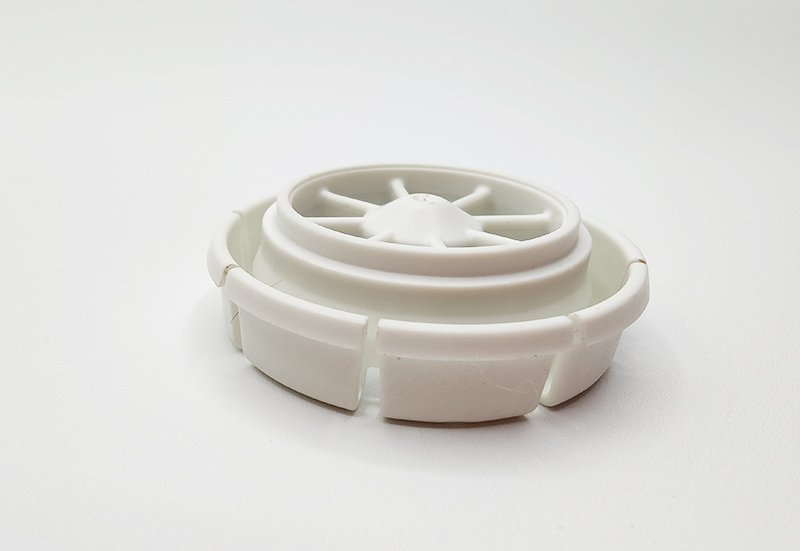Injection molding is the most important manufacturing tool in every mass produced item, from toys to tools, from jewelry to medical devices. It allows designers complexity of net-shape that is reproduced in a molding tool for high volume at low cost.
The materials that can be injection molded are diverse, so selection of polymers is a critical design function.
An experienced engineer selects polymers for a part based on;
- Material properties – toughness, strength, wear resistance, temperature tolerance, chemical resistance, cost etc.
- Molding parameters – melt-flow index (how easily the material flows), density, cooling etc.
- Precision – can the material deliver a precise reflection of the mold, will it warp or shrink?
- Functional and aesthetic properties – nylon and POM are ugly but very tough, PS is low cost and offers good cosmetics but it’s fragile.
Choosing the wrong material can have dire consequences. For example, an ABS/PC blend is tougher than basic ABS, but PC in skin contact will result in chemical failure and fracture.
Injection molding operates by;
- Melting the material to injection-readiness.
- A ram feeds the charge under pressure into the cavity.
- Retaining pressure as the cavity cools compensates for shrinkage.
- Opening the cavity allows ejection of the cooled/solidified part.
- Trimming feeder residues and any flash completes the part.
Properties of Injection Molding Materials
Injection molding materials offer a wide range of properties and can be selected with care and precision to meet diverse needs.
Physical Properties
Polymers range in density from polystyrene (0.01 g/cm3) to PTFE (2.3 g/cm3 ). The density of the polymer has some significant influences on the molding process.
- Lower-density polymers flow more easily into mold cavities, reducing defects and shortening cycles.
- Since polymers are priced by weight, density influences material usage cost.
- Low-density polymers tend to distort during cooling, driving design considerations.
- High-density polymers need stronger molds and higher processing temperatures/pressures.
Some polymers change significantly in size as they cool. High Molecular Weight PE can shrink by 4%, where glass filled PA66 can be as low as 0.3%. The thermal expansion characteristic of the polymer has far reaching implications in tooling and process design;
- Shrinkage is compensated by making the cavity oversize, so the part can cool to size.
- Shrinkage is also compensated by ‘packing’, holding injection pressure through cooling to feed material.
- High shrinkage materials will suffer more distortion.

Low moisture levels in polymers are crucial in preventing molding defects. Some polymers can absorb 4% or more water (glass filled PA46) and as low as 0.01% (FEP). This must be controlled by storage and conditioning before use.
Moisture causes bubbles, voids, and surface imperfections when it vaporizes during heating. It disrupts the flow of polymer. Moisture control ensures consistent and defect-free molding.
In many applications, the chemical stability and environmental tolerances of a chosen polymer is critical. Many polymers are sensitive to organic acids and alkalis, more are sensitive to various solvents and others are even damaged by water. Failure modes can range from mild distortion to embrittlement and even softening.
It is critical that the chemical implications of the application are considered in material selection.
Engineering polymers are those which offer higher performance. Among the most important properties is the ability to withstand shock loads and impacts, and this property is typically needed in parts for more unpredictable loading conditions.
Other mechanical properties that are widely selected for are strength and rigidity. These are important in both heavily loaded parts and higher precision parts – distortion under steady loads (creep) can affect material choice, as can the ability to withstand the normal range of expected loadings.
Where a material is to be used in an electrical insulation application, the breakdown voltage of the material is influential. Breakdown voltage under normal water absorption levels must be considered.
Where thermal conductivity is a factor is twofold;
- It influences the manufacturing process in that more conductive polymers will cool more quickly in the tool, reducing cycle times.
- Where heat dissipation in the finished part is required, this is best achieved by using additives that integrate this property. Cubic Boron nitride powder added to polymers results in near-metal thermal conductivity.
Mechanical Properties
Flexural strength measures the ability to withstand bending or flexing without breaking. This is crucial for determining load-bearing capacity. Parts subject to bending or structural stresses rely on their flexural strength to resist deformation and failure under load.
A higher flexural strength indicates ability to support heavier loads and maintain structural integrity. This plays a vital role in ensuring the reliability and durability of plastic parts.
Tensile strength is a critical property of polymers and molded parts, defining resistance to pulling forces, quantified in design to prevent rupture or breakage. This is essential for the reliability and functional-longevity of higher loaded parts.
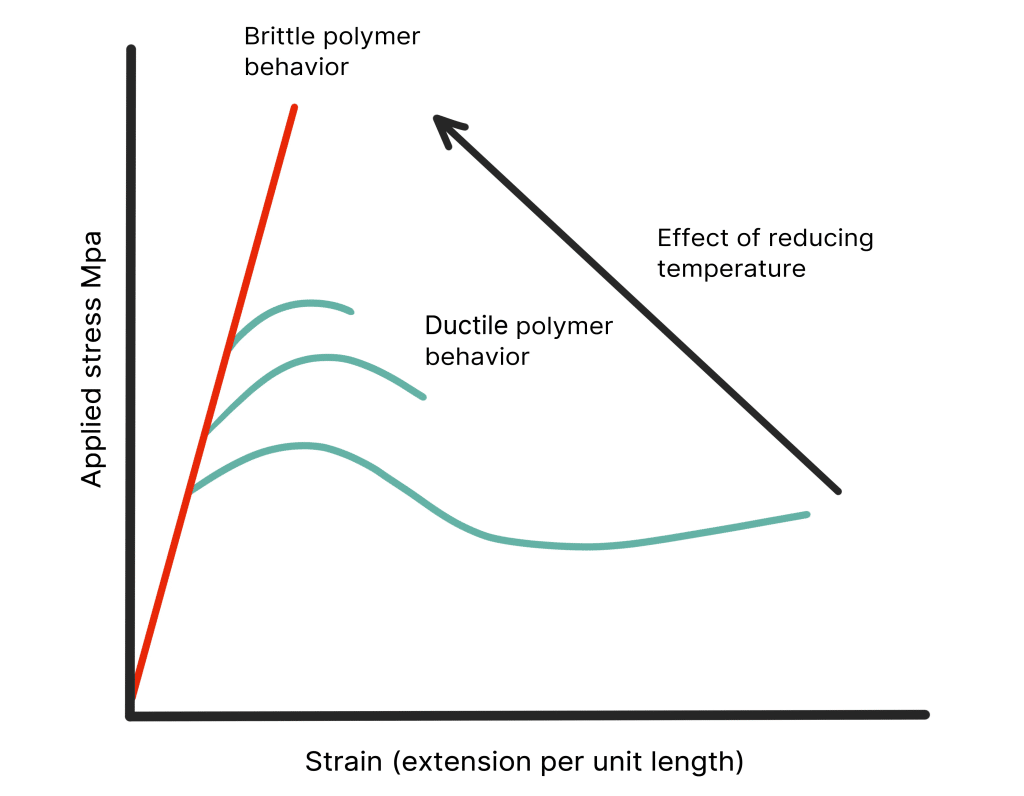
Elongation at break is a measure of a material’s ductility, indicating its ability to stretch or deform before fracturing. In plastic parts, a high elongation at break value signifies greater flexibility and resilience. This property is crucial for ensuring the longevity of plastic parts. Design that tolerates some resultant distortion can allow significantly longer functional life in products.
The hardness of a material defines its ability to resist indentation, which defines the resistance to wear. In polymer selection, this property allows polymers to be used as bearings.
The cyclic loading of plastic parts can be poorly tolerated, as the polymer undergoes delamination and fracture due to fatigue. More ductile and less rigid materials perform better in this loading scenario – as do higher strength engineering polymers.
Material Properties
Many polymers are somewhat crystalline, others are highly amorphous. Crystallinity defines the order/regularity of polymer chains. High crystallinity typically leads to greater stiffness, strength, and heat resistance. Lower crystallinity results in greater flexibility and transparency.
Crystalline regions in polymers are more organized and dense, affecting properties like melting point and tensile strength, while amorphous regions improve flexibility and impact resistance. Balancing these properties is essential in selecting a polymer for an application.

Reinforcing many polymers is achieved with addition of glass fibers. This can greatly enhance stiffness, strength and wear resistance. It can be detrimental to impact resistance, tool wear, abrasiveness and moisture absorption.
High-performance polymers with exceptional properties are required in demanding environments. They excel in chemical resistance, high-temperature stability and superior strength.
Common uses include; aerospace; automotive; medical and surgical instruments, implants; electronics; valves and seals. They ensure reliability and durability under extreme conditions.
Low-cost polymers are suitable for mass production across various industries. Their low cost and ease of processing make them ideal for producing a wide range of consumer goods, packaging materials, and construction components. Their range offers versatility and the ability to meet the high-volume demands of mass production.
Overall, molding materials must be selected for raw material costs; molding parameters; strength, resilience and toughness; overload and wear behavior in long term use; and disposal and recycling.

Javier L

Principal Systems R&D Mechanical Engineer
"Game changing in the online manufacturing space"
Jiga is the best way to get the parts you need, when you need them.
Common Injection Molding Materials
Polyamide (PA)
The polyamide (nylon) family is diverse and ranges in density, strength and toughness. They are widely used (in molded form) in engineering and non-cosmetic applications like gears, bearings and structural components.

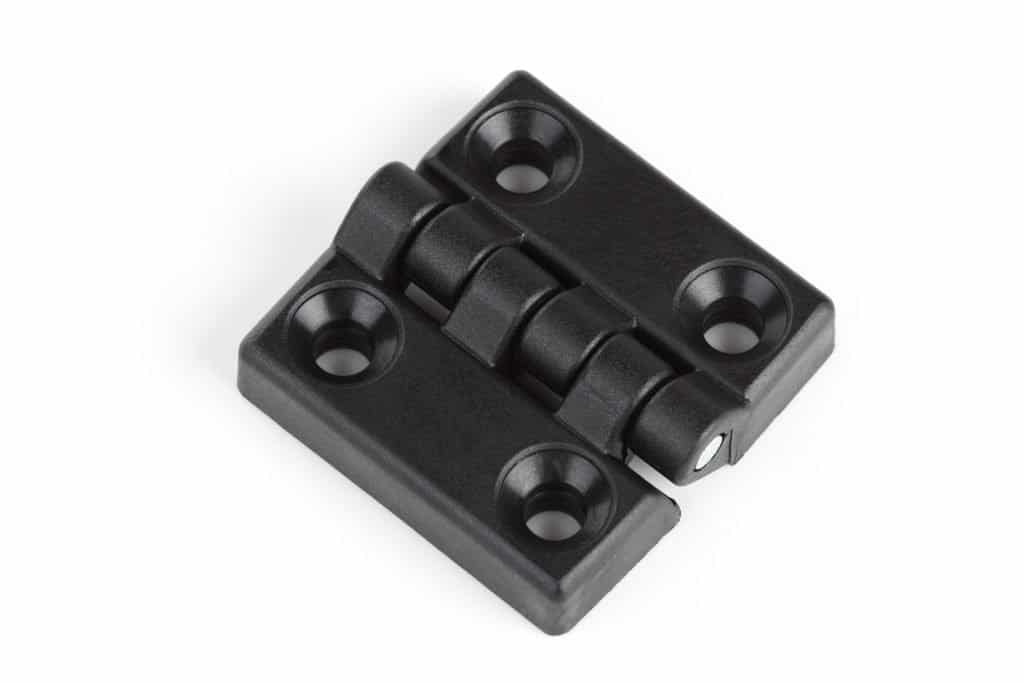
Typical application of Nylon 6 is shown in this hinge, exploiting high strength, good bearing properties and easy moldability
Polybutylene Terephthalate (PBT)
PBT is a rarely discussed but widely used engineering polymer. It is a high-performance thermoplastic, chosen for its excellent combination of mechanical and thermal properties. It exhibits high strength, stiffness, and dimensional stability, making it suitable for various loaded, structural and bearing applications. PBT is commonly used in the automotive industry for components like connectors and housings. Its chemical resistance and low moisture absorption also make it suitable for electrical and electronic applications.

Poly Ether-Ether Ketone (PEEK)
Polyether Ether-Ether Ketone (PEEK) is an engineer’s engineering polymer, with some exceptional properties. It is a high-performance thermoplastic polymer with outstanding mechanical, thermal, and chemical resistance properties. PEEK is renowned for its exceptional strength, stiffness and dimensional stability, even at elevated temperatures. It is widely used in demanding applications such as aerospace, automotive, medical, and oil and gas industries. PEEK’s unique combination of properties makes it suitable for components requiring durability and reliability under extreme conditions, and it is often selected for its resistance to abrasion, chemicals, and wear.

Low-Density Polyethylene (LDPE)
LDPE is a low cost material that offers significant toughness and durability due to its flexibility and resilience. It is used in mass production of lower precision products like toys, pipes, crates and totes, where toughness and chemical resilience is valued over dimensional precision.
Acrylonitrile Butadiene Styrene (ABS)
ABS is the universal consumer goods material, with a great balance between toughness, rigidity, impact resilience and good cosmetic capability. It is highly moldable and can handle high precision applications, but it is not considered tough enough for higher strength applications.
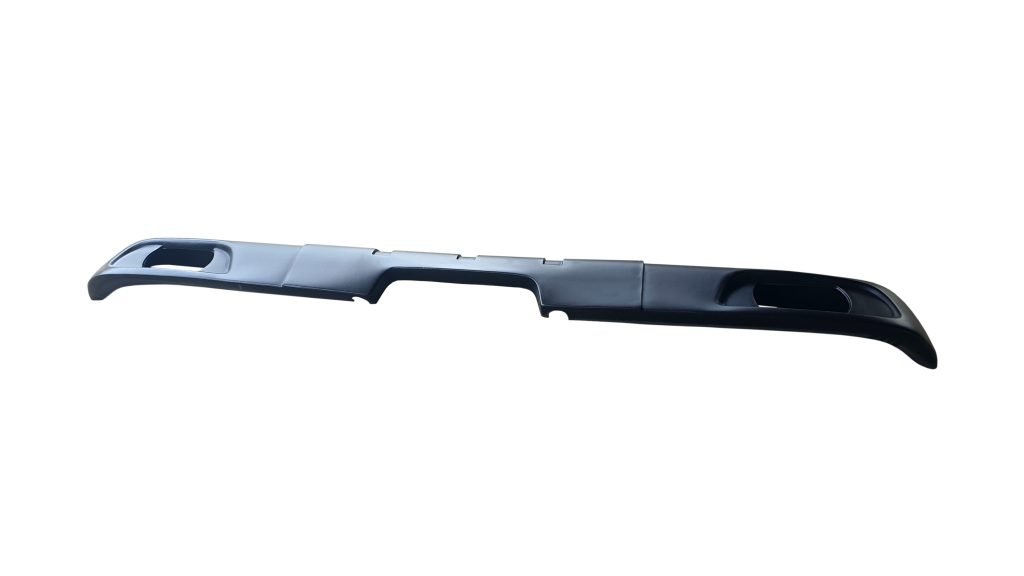

This truck bumper benefits from the ability of ABS to accept severe distortion and largely spring back to the original shape. Additionally, ABS provides long term stability, toughness and acceptance of high quality paint finishes.
High-Density Polyethylene (HDPE)
HDPE is an engineering material in that it offers high strength, great toughness and high wear resistance. It is not generally used in high cosmetic applications, but can serve under high loads and extreme chemical exposures.
Stainless Steel
Stainless steel is an interesting material in molding terms and it is increasingly practical and low cost as a method for making precise and complex net-shape parts in high grade metal via injection molding methods. Stainless steel powders are suspended in a polymer matrix, so they can be ‘melted’ and injected similarly to a high density polymer.
After molding, the polymer bound powder (green) part is sintered by high temperature exposure. This burns out the polymer component and fuzes the powder to form near full density metal. Shrinkage during sinter can be controlled to a high degree, resulting in highly precise and repeatable parts.
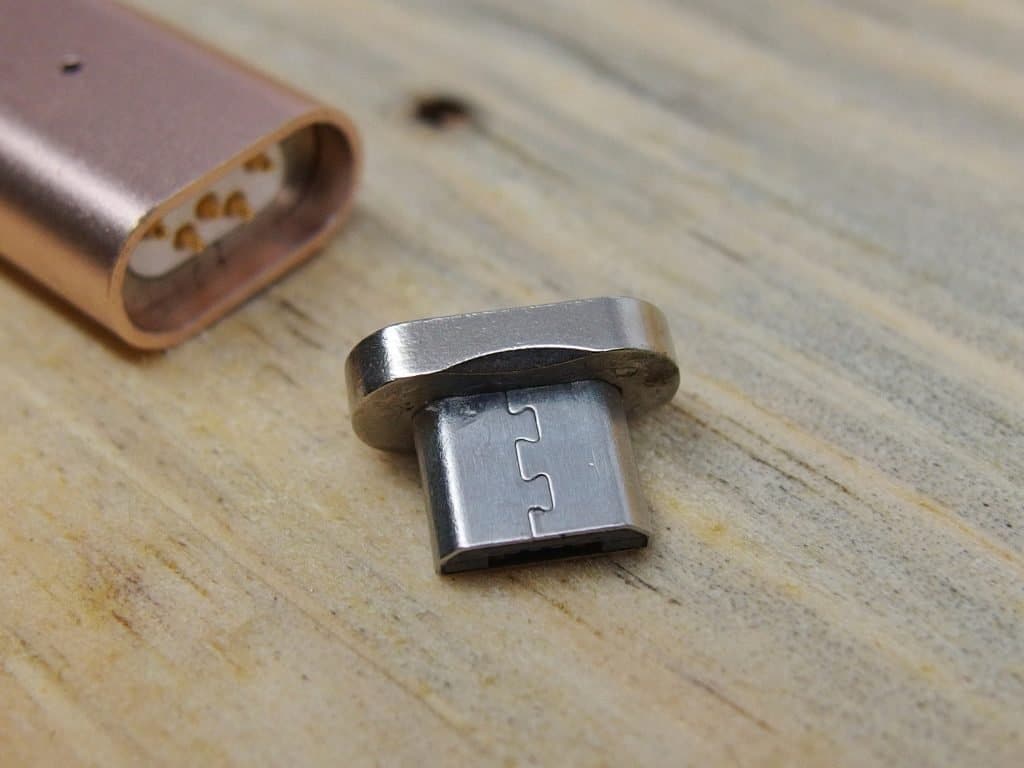

This part illustrates the complex net shape and high precision feasible with metal injection molding. The polymer bonded powder conforms very precisely to the cavity, and it is sintered from the green state to the solid metal state, reducing linear dimensions in a precise and controlled manner. Imagine machining this part from solid in stainless steel!
Material Selection for Injection Molding
The selection of molding polymers is influenced by several factors:
- Polymers require strength, stiffness and impact resistance.
- Availability and specialist processing capability.
- High or low temperature requirements.
- Chemical resilience.
- Cost as a consideration.
- Aesthetic requirements.
- Compliance with industry standards/regulations.
- Environmental impact, recyclability.
The specifics of each application must be closely evaluated to select appropriate materials. However, it’s important to note that meeting design imperatives is not solely a materials issue. Good design is always required to meet the needs of a component by compensating for the shortcomings of even the best materials available.
The selection process requires balance between the cost of the material and the application performance demands. The net cost of the product for minimum performance is critical to commercial viability, but good design compensates for material shortcomings.
Selection of materials is critical in the early stages, but without validation of the performance of the product in the real-world, this is uncertain. It is necessary to prototype and test the product at all stages of development, in order to be sure of the final performance.
Conclusion
Injection molded materials play critical roles in virtually all aspects of manufactured products and are a primary cornerstone of all industries. Ranging from the lowest cost single use products in packaging, through to the oil seals in a down-hole mud motor used in directional drilling of oil wells, injected parts are ubiquitous and relied upon.
Material options and properties are constantly expanding, and additives available for molding are increasing. This is allowing injection molded parts to undertake increasingly esoteric and demanding applications that cannot otherwise be delivered with such low cost.
